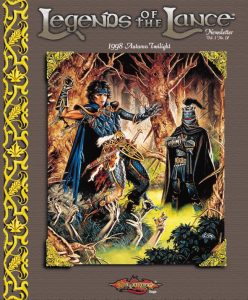
Why would some cities be larger than others? What does the geography surrounding each cluster of fantasy cities reinforce about their economic and authority systems, and how would the sudden interruption of these systems inspire quest hooks for your D&D sessions?
The most stable agrarian societies are the ones who take up residence around river systems surrounded by impenetrable mountains, deserts, or oceans. These rivers provide irrigation for agriculture, and those geographical barriers deter raiding or invasion from competing populations. The poster child for this agrarian civilization experience is Ancient Egypt, which remained a mostly stable for nearly three thousand years, only experiencing regime changes during periods of drought.
Notice though, communities aren't equally distributed up and down the whole of the Nile. Larger cities exist in specific locations for a reason. If non-food resources like timber or metal ores are equally distributed, so too would the population around the rivers. But this doesn't happen. Certain locations are just going to have more fertile soil which are better suited for growing crops, windswept river bends typical for mining clay, mountains or rocky regions with better exposed mineable metals, and in fantasy world building, areas with magical hot spots, such as Ley Line Intersections. *see bottom of article
And, while a river can more easily connect these disparate resources, rivers can only take you so far into mountains or other rugged terrain before they become un-navigable by larger trading vessels. All of these factors have different effects on which villages grow into cities, and how these larger cities develop interdependent trade networks on the river.

If irrigation from rivers enables agriculture, tools made from metal ores further enables a population's ability to do that agriculture. Unfortunately, rivers seldom traverse through the exposed rocky terrain where copper, tin, iron, or mithril could be found right on the river bank. As a result, extraction of these valuable raw materials are handled by small mining camps scattered away from the river instead. But this creates a problem. Where do these mining camps take their smelted metal ores and mana crystals for trade?
Wherever trading vessels reach a point in a river they can no longer safely sail upstream, because of rapids, weather dependent water levels, or even waterfalls, a larger population center is almost destined to coalesce there. As raw materials are brought by land to this most-upstream location, artisans and tradesmen have an opportunity to get first dibs on the bulk commodities and materials brought here from various mining camps and herding animal ranges.
These upriver cities typically become hubs for value added products or refined goods and support other nearby populations downstream. Wool is refined into yarn or textiles, ore is shaped into simple tools, clay is turned into pottery and ceramics, and lumber is fashioned into furniture. These refined products are then sailed downstream to a large port city, where these goods are then loaded onto seaworthy ships for deep water ocean trade.
These two cities, the upriver commodity hub, and its sister downstream port create an interconnected relationship that fuels the entire river system's economy. Further, just like how artisans who are able to produce goods locally in the upriver city, skilled artisans who require materials from foreign lands typically will live in these coastal port cities to capitalize on commodities coming in from foreign populations. They then sell those products up and down the entire river system.
Further, large coastal port cities typically develop financial industries born out of commodity and stock exchanges for all the supplies moving through the port, as well as the insurance and underwriting which protects the investments exchanged. Merchants are always far more comfortable to make overseas journeys when their ships and cargo are financially protected. This is why London, Chicago, New York, Shanghai, and Hamburg are all cities with deep involvement in international finance. Examples of these port city and upriver city relationships can be found all over the globe. Shanghai and Wuhan, San Francisco and Sacramento, or Bordeaux and Toulouse are all fine examples.

However, the trophy example of this phenomenon in action is the North American Piedmont Fall Line: a series of upriver large cities at the edge of the Appalachian Piedmont plateau. These city pairings include Augusta and Savannah, Columbia and Charleston, and Richmond and Norfolk, just to name a few.
Quest ideas are now something to invoke with all of these details just mentioned. So, what quest hooks and rumors can we get for free from all this world building? In a nutshell, any political faction or extraplanar threat which disrupts the flow of commerce through a metropolitan river system, especially one that disrupts a specific commodity's movement, will disrupt the entire river system's population.
For example, a thief guild master who gets a hold of a magic item to manipulate commodity exchanges will cause economic ripple effects for all communities which live on the river. A sudden lack of supplies and therefore, a surge in food or textile prices, because of a villain's activity, can lead to famine or exposure for all people living on the river. Imagine what all the small farming communities living on river's shores would do if they were suddenly cut off from iron tools or textiles?
Moreover, perhaps a river system is wealthy because of a particular mithral mine and its artisans who craft with it in the upland city. It'd be a shame for all the tradespeople downstream, which depend on that mithril mine's operation to suddenly have no supplies because an ancient crypt, filled with undead, got disturbed and made the mine unsafe to work in.
To iterate, once a population technologically develops past subsistence farming, the economies of these nearby populations become so interconnected that a sudden removal of any one of these economic parts can cause famine, disease, war, or refugee migration. For some brutal real-world inspiration, look no further than the Bronze Age Collapse. A sudden shift in climate around the Mediterranean Sea thirty-two hundred years ago led to widespread famine in the fertile crescent and Southern Europe. This kicked off rioting, governmental breakdown, disease, militant migrations, and a total shattering of the foreign trade that made bronze tools during the bronze age even possible. Only ten percent of the regional population survived this collapse, and bronze working was never reestablished in a meaningful way until the modern day.
If that's what a drought in Lavant could do, what kind of an apocalypse could a dragon-God, waking from its slumber, cause? In essence, whenever something goes wrong in one city, rumors will flow to all nearby communities, especially up and down the river, and also to any foreign port cities that the river's population trades with. Rumors spread from tavern to tavern, not just because these people are interested in hot gossip, but because the NPCs are likely to be affected.
Bad news hurts everyone. Shepherds complaining of wyvern attacks might seem like a silly rumor at first glace, but when it means clothing or blankets are about to be very expensive due to wool shortages, people for miles around, maybe even in distant lands, will become nervous of the coming winter.

* Laylines and sacred spaces explained. It is widely believed by many people that a powerful grid of earth energies circumnavigates the globe and, in the process, connects important sacred sites like the Egyptian Pyramids, Stonehenge and Machu Pichu amongst many others. The intersection points of two or more Leys are called "Ley Centers" and that they are believed by some to resonate to a powerful psychic or mystical energy. These Ley Lines were conceived as lines of power, which was accessed by our ancient people but now lost to the common man.






